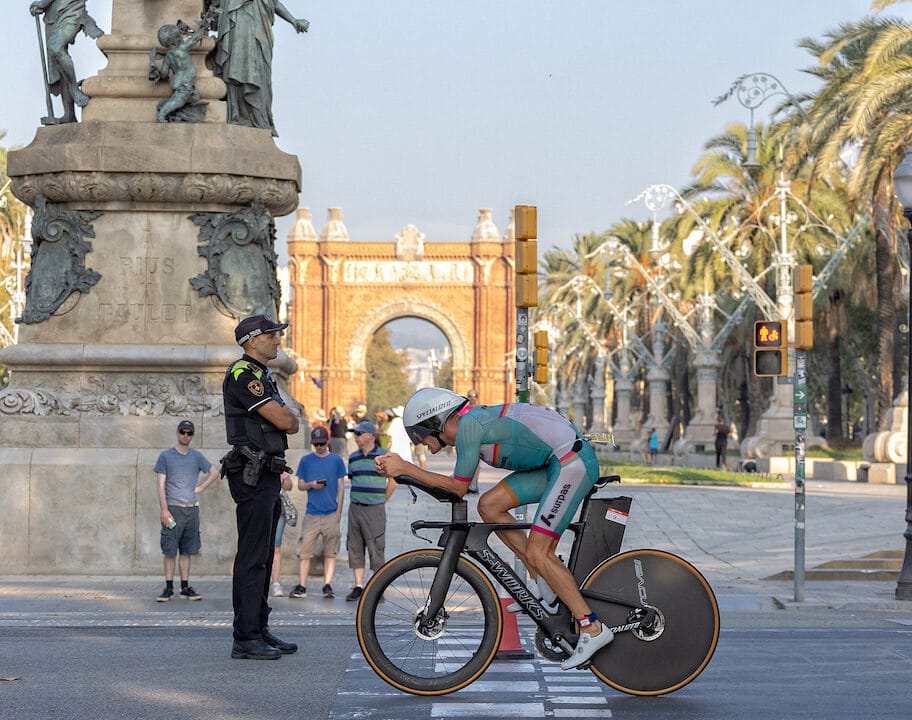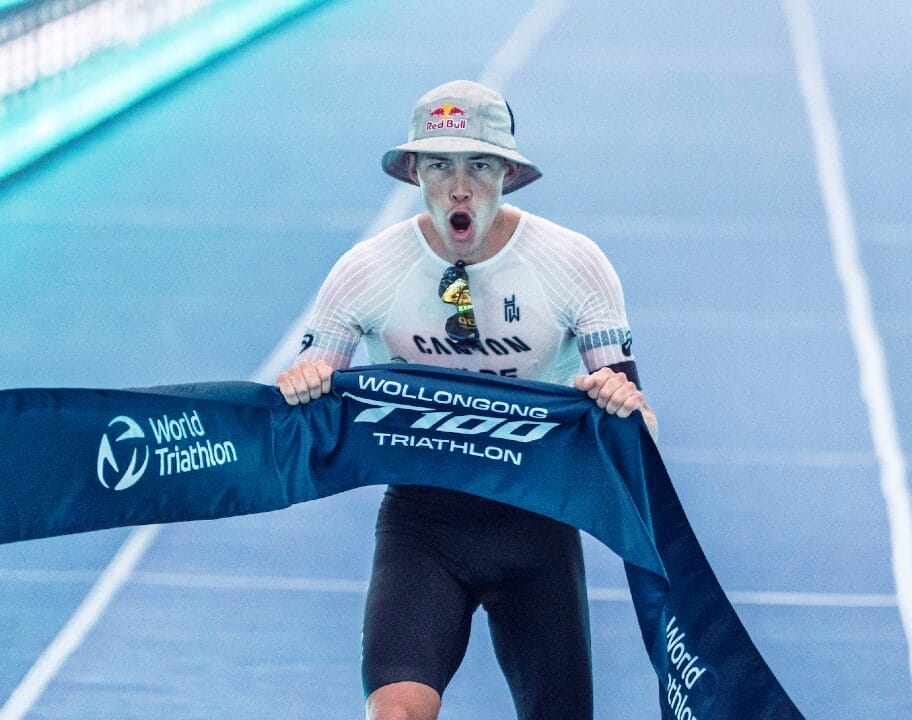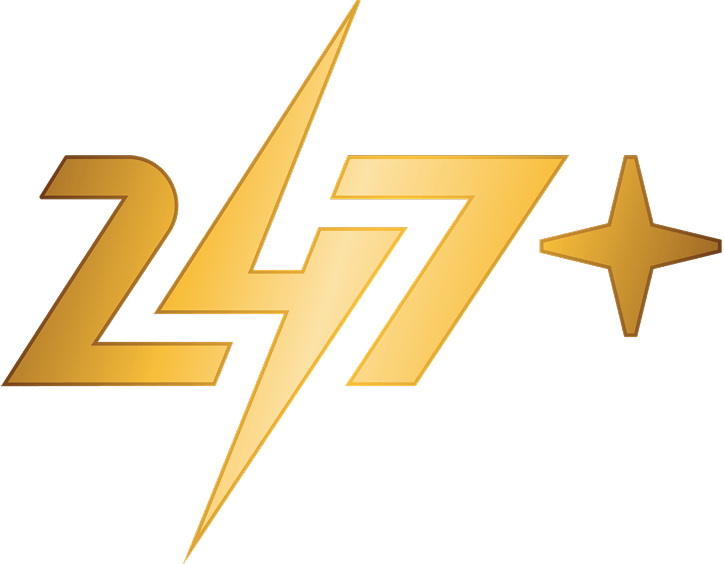Maybe your work colleague keeps raving about it. Or your friend is busy every weekend training for it. Or perhaps your partner has suddenly bumped “decent swimming pool” and “good cycling routes” up the priority list when you’re talking vacation destinations. So what on earth is this triathlon thing, and why is everyone so into it?
Whether you’ve caught some of the triathlon action in the build up to the Paris 2024 Olympics and you’re keen to find out more. Or you’ve heard friends talking about it, and you’re wondering if a triathlon could just be your next challenge. Our in-depth guide to triathlon tells you everything you need to know about this unique three discipline sport. So whether you’re looking to follow the Olympic triathlon action as a fan, get involved in the sport as a participant – or both. Keep reading to find out what a triathlon is, why it’s such a great sport to get involved with. And how you can start your own triathlon journey.
- What a triathlon is: Swim, bike and run
- What is a transition in triathlon?
- Who are the different triathlon race organisers? Your guide to IRONMAN, Challenge Family, T100, World Triathlon and supertri
- Getting started in triathlon – how to do your first triathlon
- What to expect in your first triathlon
- What are the rules for triathlon?
- More triathlon training tips and advice for beginners
What a triathlon is: Swim, bike and run
A triathlon is a multisport endurance event, consisting of a swim followed by a bike ride and finished off with a run. There are a huge range of triathlon distances to choose from. Beginners often start with a short distance super sprint triathlon, with the swim taking place in a swimming pool so you don’t have to worry about learning how to swim in open water. But there are plenty of longer distance triathlon races to choose from too, including the legendary Ironman distance – a 2.4 mile swim, 112 mile bike and a 26.2 mile run.
There are various forms of multisport events, including duathlon (run-bike-run), aquathlon (swim-run) and aquabike (swim-bike). And some forms of professional triathlon, such as supertri, will mix up the order of the three sports. But a classic triathlon is a swim, a cycle and run – in that specific order.
How did triathlon begin?
On 25 September 1974, an event hosted by the San Diego Track Club sparked the emergence of modern triathlon. An alternative to hard track workouts, the event comprised a total of 6 miles of running, 5 miles of biking and 500 yards of swimming. Forty-six people took part and the organisers used car headlights to help direct those finishing after sunset.
Judy and John Collins took part in that first multisport event in San Diego. A few years later in Hawaii, they were pivotal in organising the first ever Ironman triathlon. A group of athletes were arguing over which event was toughest: the Waikiki Roughwater Swim (2.4 miles), the Around-Oahu Bike Race (115 miles) or the Honolulu Marathon (26.2 miles). To settle the debate, they strung all three events together. And so on Oahu in February 1978, Ironman racing was born.
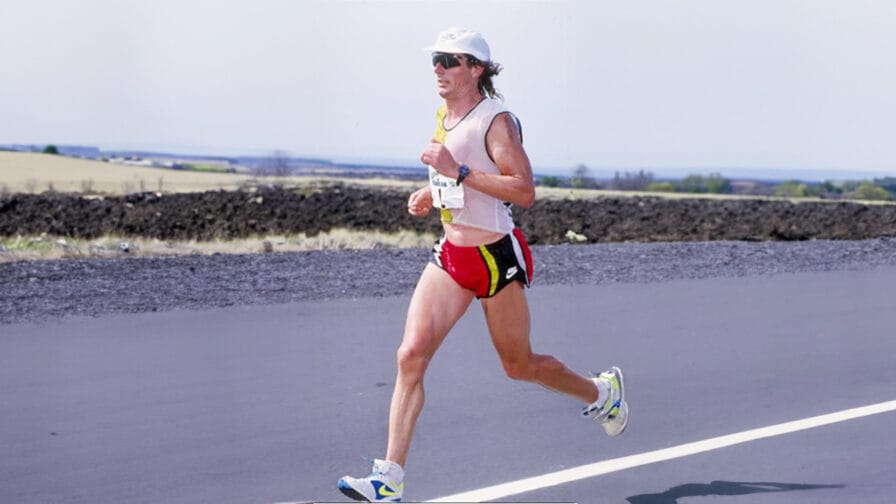
Triathlon’s popularity increased over the following years. The International Triathlon Union (ITU) was founded in Avignon, France, in 1989 and in that same year the ITU’s first official world championships were held. The standard Olympic distance was based on existing Olympic distances for individual sports, namely 1500m swim, 40km bike, and a 10k run.
Triathlon landed in the mainstream with its debut at the Sydney Olympics in 2000. The success of the Brownlee brothers at London 2012 took things to a new level in the UK, and with events organisers offering more and more opportunities for amateurs to get involved – it’s quickly become a popular participation sport.
What are the triathlon distances?
In the Olympics, athletes take on the aptly-named ‘Olympic distance’ – though you’ll sometimes find it referred to as a ‘standard distance’ triathlon. This involves a 1500m swim, a 40km bike and a 10km run.
But there are several other triathlon distances available to both the PROs and amateurs alike. Read our Triathlon Distances article to get a full break down of every triathlon distance, from super sprint to middle distance/half Ironman, and full Ironman distance.
What is a transition in triathlon?
If you’ve watched the Olympic triathlon on television, or come across some of the long distance triathlon race coverage. You’ll probably have heard the commentators talking about ‘transition’ – namely how important it is! So what is transition?
In triathlon, transition is the process of switching between the three sporting disciplines. It’s often referred to as the crucial ‘fourth discipline’ – because it’s where time can easily be lost, or gained. Which can ultimately impact the outcome of the race! There are two transitions in every triathlon, which you’ll find are referred to as T1 and T2.
T1: After the swim comes the first transition, known as T1. Triathletes exit the water after the swim, and move as swiftly as possible to remove their wetsuits, goggles and swim caps, and get out on there bike. Athletes have to make sure they’ve put their cycling helmet on – and fastened it – before they touch their bike. They then run with their bike to a mount line – usually a mark on the ground which designates where they are allowed to get on their bike. Hopping on the saddle before the mount line can result in disqualification.
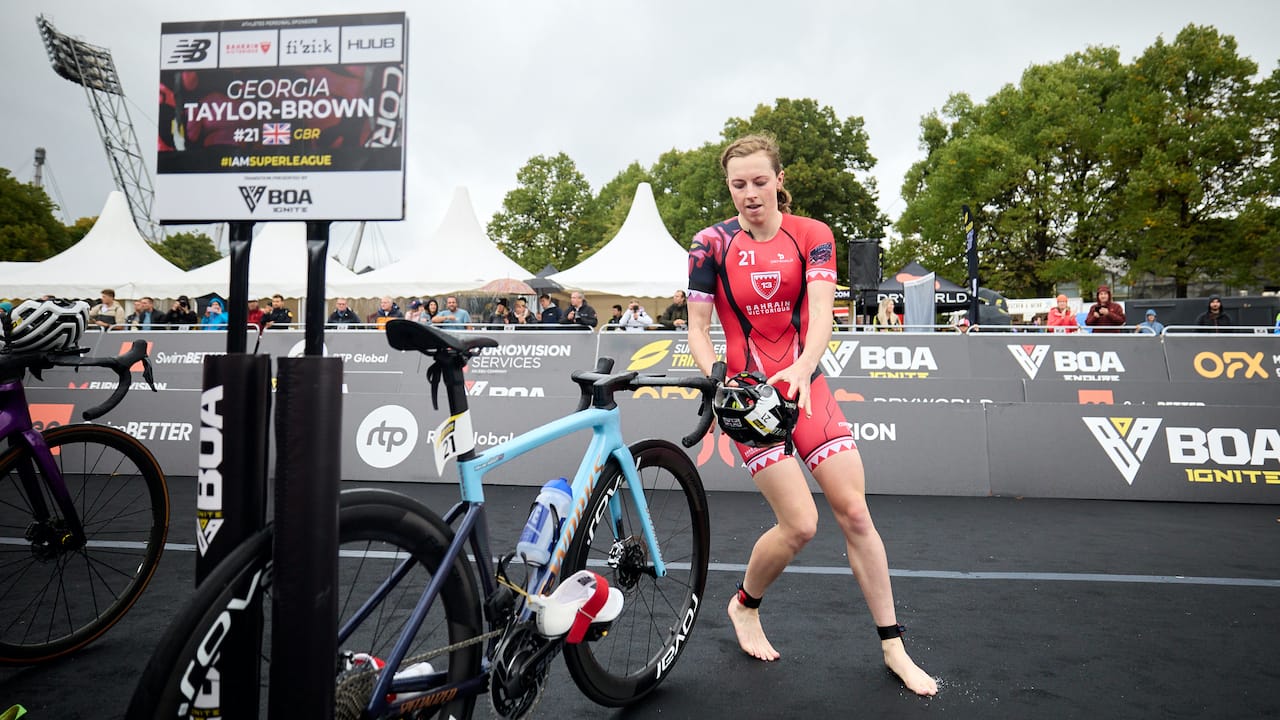
T2: After the bike leg there is another transition called T2. Athletes have to get off their bike at the dismount line, and then run with their bike through the transition zone to put it back on the bike racks. Once they’ve set their bike down, they’re allowed to remove their helmet and put their running shoes on – ready to start the final discipline of the triathlon.
The length of the transitions in a triathlon vary from race to race. In sprint and Olympic distance racing, typically athletes are allowed to leave their running shoes and cycling helmet next to their bike. Meanwhile in longer distance racing such as Ironman, they might have to store their things in transition bags which are kept on hooks – away from the bikes.
Read our full guide to triathlon transitions include a check list for getting set up on race day.
Who are the different triathlon race organisers? Your guide to IRONMAN, Challenge Family, T100, World Triathlon and supertri
In the same way you have various leagues, tournaments and championship in other sports – think Premier League and Champions League in football. There are also a number of different major race organisers and elite championship series in triathlon.
World Triathlon Championship Series
World Triathlon are the international governing body for all multisport, including triathlon, duathlon, winter triathlon and more. For the elites, the World Triathlon Championship Series is the major race series which holds a huge amount of weight when it comes to Olympic qualification. And outside of Olympic years, the series is where you’ll find the very best sprint and Olympic distance athletes battling it out over a series of races to become World Champion. Athletes compete under their national federation, such as USA Triathlon and British Triathlon.
IRONMAN
IRONMAN – the company – are the organiser of hundreds of triathlon events all over the world. Both elites and amateurs can participate in IRONMAN events, which cover the 70.3 half distance, full Ironman distance and some shorter distance racing. In 2024 IRONMAN introduced a new Pro Series. Professionals compete at designated races throughout the year to earn points and top the leader board, with a huge bonus prize purse on offer.
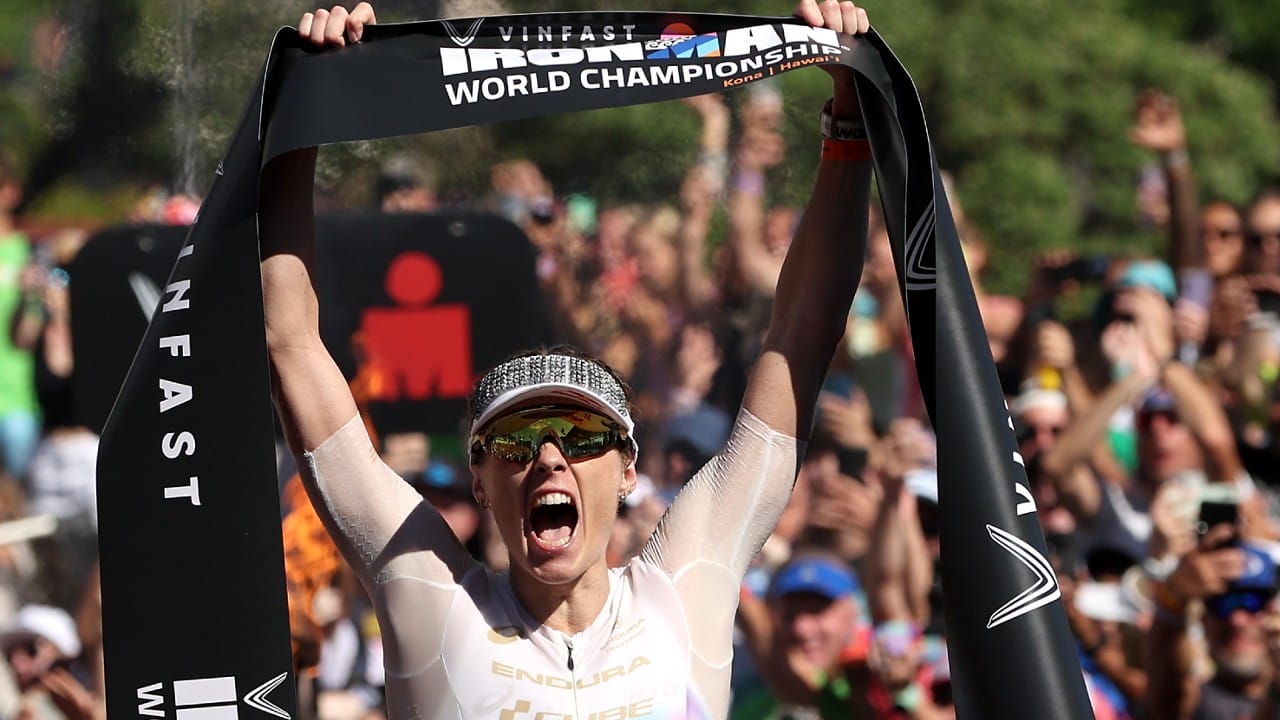
Each year there is also an IRONMAN World Championship. Previously this was hosted on one day on the Big Island of Kona, Hawaii. But in 2022, IRONMAN split the world championship hosting the men’s races and women’s races on separate days – in an effort to ensure equal coverage of both races. And in 2023, in a move that caused much debate, they hosted two separate events entirely. The men’s race took place in Nice, France. And the women’s race took place in Kona, Hawaii. The plan moving forward is that the locations for the men’s and women’s races will alternate each year.
Challenge Family
Challenge Family has a portfolio of internationally acclaimed middle distance (70.3 miles) and full distance (140.6 miles) triathlon events. While they’re renowned for their support of amateur triathletes, offering a welcoming ‘family’ experience at every race. Challenge Family also attract many of the world’s top PRO triathletes, particularly middle distance specialists. Along with the big names in the sport, Challenge Family races are also well worth following to catch some of the next generation superstars – as the organiser is great at supporting up and coming professionals. Elites also compete for a bonus prize pool at the end of the year.
T100 / Professional Triathletes Organisation
The Professional Triathletes Organisation (PTO) was set up to support athletes racing over the middle distance and long distance – i.e. those who don’t race short course and therefore aren’t part of their national federation’s supported elite programme. The PTO have since created the T100 World Tour.

This is a series of 100km races (2km swim, 80km bike, 18km run), where 20 of the world’s best athletes compete throughout the year to become the overall T100 world champion. The racing brings in both long and short course specialists alike, making it a really exciting format to follow. The T100 have contracted athletes who commit at the start of the season to race in the series all year. Additional ‘wild card’ athletes are added to each race line up. Amateurs can now also participate in separate ‘age-group’ T100 events, often on the same course as the elites.
supertri
supertri (formerly Super League Triathlon) is known for fast, furious and ultra-short races. Typically you’ll find PRO athletes who compete on the World Triathlon Championship stage, plus next generation future Olympic hopefuls, racing the supertri events. The formats are dynamic – often mixing up the order of the triathlon disciplines, or tasking athletes with competing multiple triathlons back-to-back. supertri aim to create ultra spectator-friendly racing and they also have an eRacing event which sees athletes compete in an Arena/stadium environment in a format that blends the real life with the virtual.
Getting started in triathlon – how to do your first triathlon
While it might seem intimidating at first, triathlon is a very beginner-friendly sport. There is a triathlon for everyone – and you don’t have to dive in at the deep end with a full Ironman distance race. Plenty of governing bodies such as British Triathlon have a programme of events specifically aimed at first time triathletes, putting on pressure-free ‘races’ through their Swim Bike Run initiative.
Joining a triathlon club is one of the best ways to get into the sport. Most clubs will cater for beginners through to experienced triathletes, meaning you’ll have plenty of like-minded people to share guidance and advice. Plus it makes the training sessions fun!
To start training for your first triathlon, you just need to develop a good level of base fitness. You certainly don’t need to be an elite-level athlete, and if you race the shorter distances – it doesn’t have to take up all your spare time. A good starting point is to simple enjoy swimming, cycling and running a few times a week. Once you feel ready to get into more structure training, then a beginners training plan is an excellent way to start focusing your training to get ready for your first race.
Read our full guide on getting started: How to start training for a triathlon
How much does it cost to do a triathlon?
The cost of doing a triathlon depends on the race and the distance. Some of the big, long distance races can come with high entry fees. This is usually because the event will feature closed roads, a big expo, a goody bag and free food after the race. These big events have an incredible festival-like atmosphere, but it comes at a cost. But local, grassroots events can be much more budget-friendly – and while you may have to share the roads, you’ll still have a great experience.
For your first triathlon, a small local event is a great way to get the swim-bike-run experience without the pressure of a big event. Seek out your local triathlon club – often they’ll have a local event they all tend to go to, or they might even be involved with organising a race themselves.
For more race inspiration, check out our Let’s Race… race guides.
What kit or gear do I need for triathlon?
With three sports to train for, triathlon does involve a bit more gear than other sports. At a basic level, you’ll need a bike, a cycling helmet, some running shoes, and a pair of goggles. If you’re taking part in an event that features an open water swim, you’ll also need a wetsuit. To make things easier on race day, you might also want to consider wearing a tri suit (read our Tri Suit Buying Guide for more information on what a tri suit is!) and getting a race belt so you don’t have to pin a race number to your kit.
To help you get started, we’ve put together a comprehensive list of the triathlon essentials and the nice to haves in our Essential Triathlon Gear guide.
What to expect in your first triathlon
Almost time for your first race? It’s understandable if you’re feeling nervous. Even the most seasoned of seasoned PROs get pre-race nerves. And while we can’t predict precisely how your race will pan out, we can give you an idea of what to expect to help take at least some of the unknowns away.
Swim
In a triathlon the swim takes place either in a swimming pool or in open water (for example a lake, a river or the sea). Pool-based swims are usually 400m in distance, but they can be shorter or longer. Usually swimmers will be set off individually at timed intervals. The race organiser will explain everything in full on race morning, but you’ll either complete the full distance in one lane – or you’ll be asked to move across the lanes ‘zig-zag’ style.
Open water triathlon swims can be held in a lake, a river or the sea. The race might be a mass start, where all athletes enter the water at once. A rolling start, where athletes start on dry land and make their way into the water in a ‘procession’ – your personal race time doesn’t begin until you enter the water. Or a wave start, where you set off in a small groups at a set time. Mass starts can feel intimidating with so many people entering the water at once. If you’re nervous, start towards the back and off to the side so you don’t get caught up in the crowd. Stay calm and remember, it’s fine to hang back, tread water or do breaststroke for a while if you need to catch your bearings.
Bike
Once you’ve finished the swim, you must ensure that you’ve put your race number on and your helmet on before you take your bike off the rack. Run (or walk) with your bike until you reach the designated mount line – don’t get on your bike before the line.
Most triathlons are non-drafting. This means you have to keep a certain distance away from the rider in front of you – typically between 12m and 20m. This is because you get an unfair benefit from riding right behind someone – they shelter you from the wind so you don’t have to work as hard.
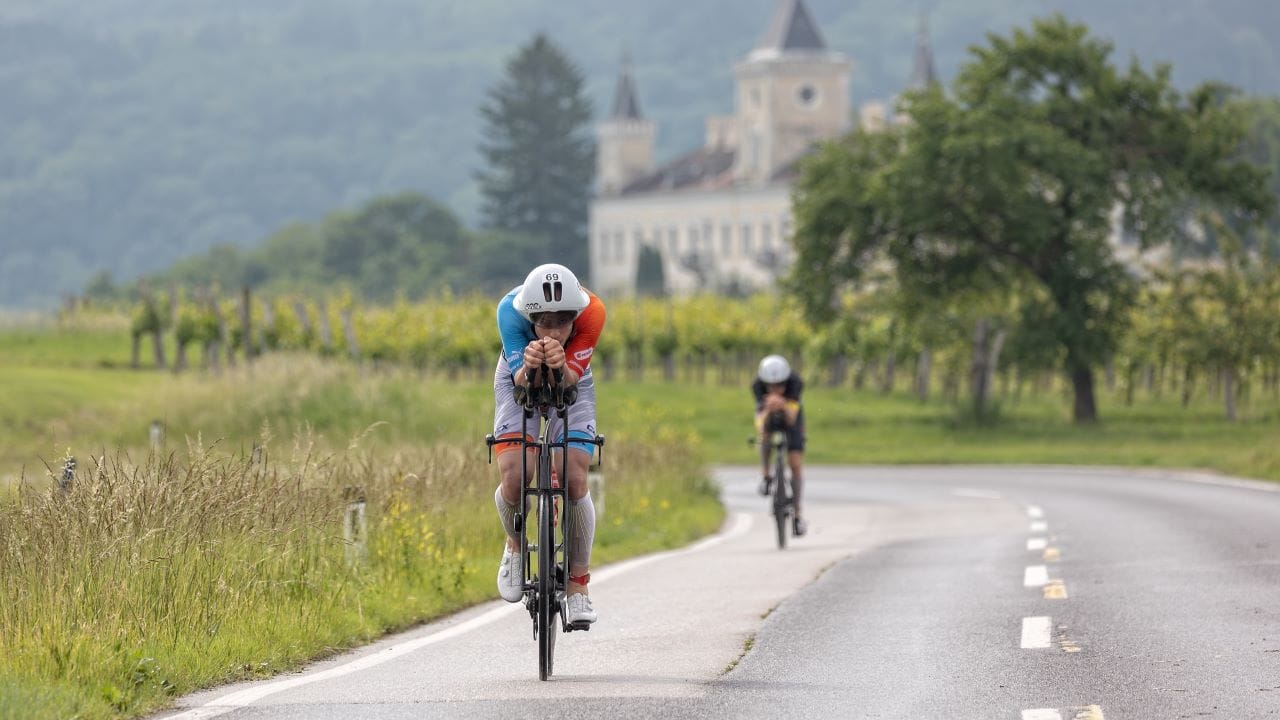
Most local and small triathlons will feature open roads – meaning you’ll have to share the road with any traffic. Courses are always well-marked and volunteer marshals will stand at junctions to make sure you know where to go, and to help warn any traffic. But you need to keep your wits about you and obey the rules of the road. If you’re racing in a larger event, you may get to experience the joy of racing on closed roads. No cars! But it’s still important to be aware of your surroundings, particularly if you’re overtaking other riders or being overtaken.
Run
As you reach the end of the cycling section, you’ll arrive at a dismount line on the way back into transition. It’s essential that you stop and get off your bike before this dismount line, so slow down and pay attention.
With two of the three disciplines done, now you’ll run with your bike and put it back on the rack where you placed it before the swim. Once you’ve racked your bike, you can now take your helmet off. If you’re wearing cycling shoes, you’ll now change into your running shoes.
Expect to experience what we like to call ‘jelly legs’ when you first start running after cycling. It’s a strange sensation, but your legs will soon adapt and get out of cycling mode and into running mode. Try not to set off too fast when you start running and focus on keeping the pace and your breathing under control. You might find you can’t run as quickly as you would be able to in a stand-alone running race or parkrun, because you’ve just been swimming and cycling.
Once you reach the finish line, don’t forget to smile and celebrate. You’ve just finished your first triathlon!
What are the rules for triathlon?
All sports have a rulebook, and triathlon is no different. We’ve mentioned a few rules already, so to recap. Here are a few of the most important triathlon rules to know about if you’re a beginner:
- On arriving at the race your bike will be inspected (as well as a check that your helmet fits correctly). The bike must be roadworthy and safe. Of particular note, your handlebars must have bar ends/plugs in place.
- Buoyancy aids are not permitted in the swim. In races where wetsuits are not worn, during the swim clothing is not permitted below the knee. This means that if you wish to wear calf guards these will need to be put on after the swim.
- A bike helmet is mandatory. In T1 you must put your helmet on (and fasten it) before you remove your bike from the rack. In T2 you must have re-racked your bike before you take off your helmet.
- On exiting T1, you must not mount or get on your bike until you have passed the mount line – most often this is a line drawn on the road with marshals closely monitoring the line has been crossed. Similarly, upon returning to transition you must dismount your bike before crossing the dismount line.
- Depending on the race you enter, the bike leg will be either non-drafting or draft-legal. So what is drafting? Basically it’s riding close behind somebody else which will then give you an advantage thanks to the natural tow it gives you. So if your race is non-drafting, that’s what you absolutely cannot do. If you do, you could get a time penalty or even be disqualified.
- On the bike, when riding on open roads, you must comply with the laws of the road, including not crossing the white-line onto the opposite side of the road.
- Unlike many running races, headphones are not permitted to be used during any part of a triathlon.
More triathlon training tips and advice for beginners
That’s the basics of what a triathlon is, how to find your first triathlon event and what to expect as you get into the sport covered. But if you want to get more tips and advice, head over to our Triathlon for Beginners section to learn more.





